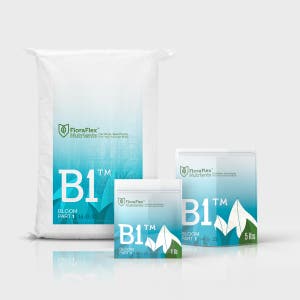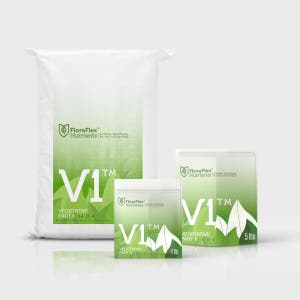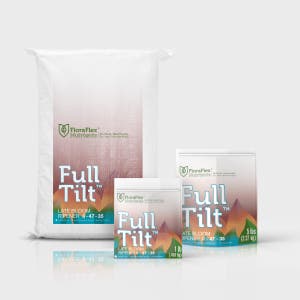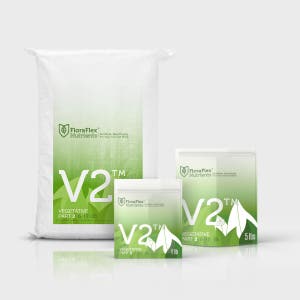In the world of plant nutrition, confusion often arises around base nutrients and additives. While both are essential tools for growers, using them incorrectly can lead to imbalances, nutrient lockout, and poor plant performance. Knowing when to use base nutrients, how to layer in additives, and ensuring compatibility between products is key to achieving healthy, thriving plants.
This guide clarifies the roles of base nutrients and additives, highlights common mistakes, and shows how FloraFlex’s nutrient line delivers seamless compatibility for optimal results.
What Are Base Nutrients?
Base nutrients are the foundation of plant nutrition. They provide the essential macro and micronutrients that plants need throughout their life cycle.
The Primary Role of Base Nutrients
- Macro Nutrients: Nitrogen (N), Phosphorus (P), and Potassium (K) are the building blocks of growth.
- Secondary Nutrients: Calcium (Ca), Magnesium (Mg), and Sulfur (S) are critical for enzyme activation, chlorophyll production, and cellular structure.
- Micronutrients: Iron (Fe), Zinc (Zn), Manganese (Mn), and others support smaller but equally vital processes.
Without base nutrients, plants cannot grow, photosynthesize, or produce fruit and flowers effectively.
"Are your nutrients working together—or against each other? Learn the difference between base nutrients and additives, why compatibility matters, and how FloraFlex keeps your plants thriving with perfectly balanced solutions."
What Are Additives?
Additives are supplementary nutrients or tools that enhance specific aspects of plant growth but cannot replace base nutrients. They’re used to target specific goals such as boosting flower production, increasing nutrient uptake, or protecting roots.
The Role of Additives
- Enhancers: Products like bloom boosters, silica, or calcium-magnesium support specific growth stages.
- Protectants: Root cleaners, bio-stimulants, and enzymes protect roots and break down organic matter.
- Supplements: Fulvic acids, amino acids, or beneficial microbes improve nutrient uptake and overall plant health.
Key Insight: Additives work with base nutrients—not as a replacement. Overusing or combining incompatible additives can throw nutrient ratios off balance and cause plant stress.
Why Compatibility Between Base Nutrients and Additives Matters
Compatibility ensures nutrients are available to plants without causing lockout, precipitation, or imbalances. Poorly mixed nutrients or incompatible additives can:
- Precipitate Out: Certain additives, like calcium and phosphate, form solids when mixed improperly.
- Cause Nutrient Lockout: Excess of one nutrient (e.g., calcium) can block others like magnesium or potassium.
- Lead to pH Imbalances: Additives can shift pH levels, making nutrients unavailable to plants.
Using compatible nutrient systems, like FloraFlex’s base nutrients and additives, eliminates these risks and ensures consistent results.
How FloraFlex Base Nutrients and Additives Work Together
FloraFlex offers a complete, balanced nutrient system that simplifies compatibility and maximizes plant health.
FloraFlex Base Nutrients
- V1 and V2 (Vegetative Stage): A balanced 2-part formula delivering essential nutrients during early growth.
- B1 and B2 (Bloom Stage): A 2-part formula specifically designed for flowering, supporting larger yields and stronger development.
Why It Works: FloraFlex base nutrients provide the foundation plants need, with perfect N-P-K ratios, secondary nutrients, and micronutrients for each stage.
FloraFlex Additives
- Wet Si (Silica): Strengthens plant cell walls, improving structural integrity and stress resistance.
- When to Use: Early growth to late bloom.
- Compatibility: Always add silica first to the reservoir before base nutrients.
- CalMag: Corrects calcium and magnesium deficiencies.
- When to Use: Before base nutrients, especially when using RO water or seeing deficiencies.
- Compatibility: Works seamlessly with FloraFlex base nutrients to maintain nutrient balance.
- Bloom Boosters:
- Bulky B: Supports early flower development with balanced PK ratios.
- Full Tilt: Drives late-stage flowering for dense, heavy buds.
- Root Drip: Cleans the root zone and breaks down excess salts.
- When to Use: During transitions or when salt buildup is detected.
"Silica must always be added first to prevent lockout—mix smarter, not harder!"
Step-by-Step: How to Mix FloraFlex Nutrients and Additives for Compatibility
Ensuring compatibility starts with proper mixing order. Follow these steps to prevent precipitation or lockout:
- Start with Silica (Wet Si): Silica needs to be added first and mixed thoroughly before anything else.
- Add CalMag: If using calcium-magnesium, add it next and allow the reservoir to circulate.
- Mix Base Nutrients:
- V1 and V2 for vegetative growth.
- B1 and B2 for flowering.
- Add Bloom Boosters (if applicable): Introduce Bulky B or Full Tilt depending on the growth stage.
- Adjust pH: Let the reservoir mix for 5–10 minutes before making final pH adjustments.
- Test EC and pH: Confirm EC and pH levels are balanced to ensure compatibility and availability.
Common Mistakes When Using Base Nutrients and Additives
- Skipping Mixing Order: Adding nutrients out of sequence (e.g., adding silica last) can cause precipitation.
- Using Too Many Additives: More isn’t always better. Overloading additives can disrupt nutrient balance.
- Ignoring pH: Additives can shift pH levels, so always test and adjust.
- Overfeeding: Exceeding proper EC levels can lead to salt buildup and lockout.
How FloraFlex Simplifies Nutrient Compatibility
FloraFlex products are designed to work in harmony, ensuring:
- Perfect Compatibility: No risk of nutrient conflicts or precipitation.
- Simplified Feeding: A clear, easy-to-follow mixing order for base nutrients and additives.
- Improved Results: Targeted growth enhancers and protectants for healthier plants and higher yields.






















